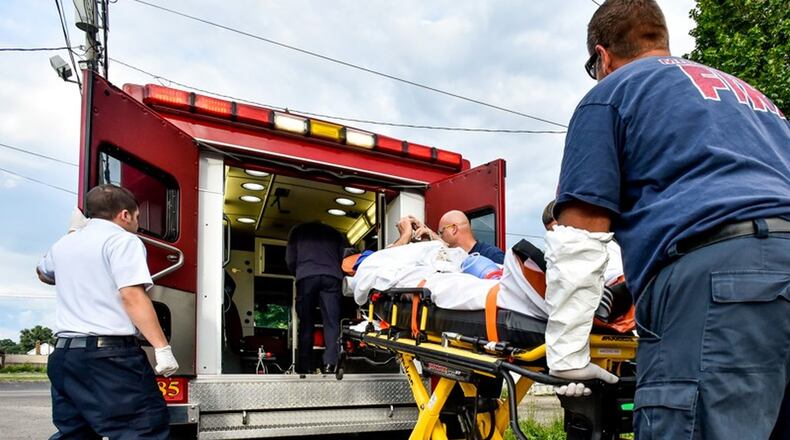“Medicaid is the safety net for our most-needy Ohioans,” Auditor Dave Yost said. “That safety net is being stretched thin by the thousands of people who have lost their jobs, their health insurance and are in desperate need of care. As much as we’ve done in Ohio to curb this epidemic, more needs to be done.”
RELATED: Butler County doubles funding for opiate epidemic
There have been 92 confirmed overdose deaths in Butler County this year, the same number for all of 2012 and on par with the 232 overdose deaths reported last year by the coroner’s office.
Butler County depends on Medicaid to run most of its social service agencies, including Children Services, public assistance, workforce development, developmental disabilities and the Butler County Mental Health and Addiction Recovery Services Board (MHARS).
MHARS Executive Director Scott Rasmus estimated 60 percent to 80 percent of the dollars spent with service providers through the agency come from Medicaid.
“It’s a huge chunk,” Rasmus said. “Obviously it’s a part of our Opiate Business Plan to recoup Medicaid funds. It’s even more crucial than any board subsidy, levies, that the board has.”
The epidemic has also compounded the number of children needing to be removed from dangerous home environments by Children Services.
MORE: New provider for program aimed at keeping kids out of county’s custody
JFS Executive Director Bill Morrison said 90 percent to 95 percent of the agency’s clients are Medicaid eligible and those funds pay for not only services addicts need but also has made it possible for the Children Services to resurrect programs like Family Preservation — an intensive program that gives families concentrated attention to help keep their family intact — and others.
Morrison said Medicaid coverage for programs and services parents need — in order to get back or keep their children through Children Services — is so important the agency several years ago placed a JFS Medicaid specialist in the Fair Avenue Children Services offices.
“When we go out and initiate an investigation on a family, we find they’re involved in some kind of drug abuse behavior, and they don’t have Medicaid, right from the start we’re connecting them with Medicaid,” Morrison said.
Some people are of the opinion drug addicts should pay their own way and not burden taxpayers with their treatments. County Administrator Charlie Young said taxpayers are already paying for the huge epidemic in one way or another. If it’s not treatment then through public assistance because the addicts have lost their jobs, through the jail and court system or other taxpayer-funded areas addicts can find themselves brushing up against.
“We need to be treating the people who are addicted. We need to be working with them to get them to change, to come back and be productive members of society,” Young said. “That’s far cheaper than other avenues they can end up traveling… No matter how you look at it, the costs are high.”
Morrison said this is a tough time to be relying on Medicaid as a major funding source with all the changes underway in Columbus overhauling the behavioral health system. Medicaid is moving to the private sector managed care system July 1.
Scott Gehring, CEO of Sojourner, one of the county’s biggest substance abuse providers, said when the state decided to turn the Medicaid reigns over to the private sector, it mandated that reimbursement rates and covered services not change for a year. When that year is up Gehring said addiction services for Medicaid recipients will change and in his opinion not for the better.
“While we’re working very diligently right now to prevent any hiccups or bumps in the services received,” Gehring said. “I can’t say a year from now, when that requirement from the state isn’t there, there are definitely going to be changes and probably a reduction in the availability of services.”
About the Author
